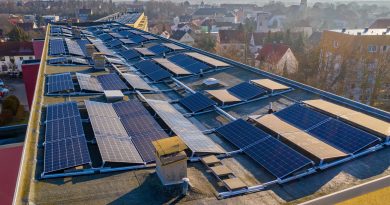Can Solar Panels Be Different Colors?
Solar panels are commonly associated with blue and black hues, but as solar technology advances, new color options are emerging. This blog post explores the reasons behind traditional solar panel colors, the technology enabling different colors, and how these choices impact efficiency, cost, and aesthetics. We’ll also look at the factors influencing the choice of solar panel color and the future of colored solar panels.
Table of Contents
- 1 The Science Behind Solar Panel Colors
- 1.1 The Impact of Color on Solar Panel Efficiency
- 1.2 Comparison of Solar Panel Colors and Efficiency
- 1.3 The Availability of Different Colored Solar Panels
- 1.4 Factors Influencing the Choice of Solar Panel Color
- 1.5 The Future of Colored Solar Panels
- 1.6 Common Misconceptions About Solar Panel Colors
- 1.7 The Role of Color in Solar Panel Design and Marketing
- 1.8 The Environmental Impact of Different Color Options
- 1.9 Conclusion
- 1.10 FAQ Section
The Science Behind Solar Panel Colors
Traditional Colors:
- Blue Panels: The blue color of many solar panels comes from the anti-reflective coating used on polycrystalline silicon cells. This coating increases light absorption and gives the panels their distinctive blue hue.
- Black Panels: Monocrystalline solar panels often appear black due to the uniformity of the silicon crystals and the anti-reflective coating, which makes them more efficient at absorbing sunlight.
Emerging Colors:
- Colored Panels: Advances in nanotechnology and material science have enabled the development of solar panels in various colors, including green, red, brown, and even transparent options. These colors are achieved through different coatings, dyes, or by adjusting the manufacturing process of the photovoltaic cells.
The Impact of Color on Solar Panel Efficiency
Efficiency Differences:
- Blue Panels: Generally, polycrystalline panels, which are blue, are slightly less efficient than their black monocrystalline counterparts but are more affordable.
- Black Panels: Black panels, being monocrystalline, typically offer higher efficiency due to better light absorption properties.
- Colored Panels: Introducing colors other than blue or black can decrease efficiency. The coatings or dyes used to create these colors can reflect more sunlight, reducing the amount of energy the panels can produce.
Comparison of Solar Panel Colors and Efficiency
| Color | Panel Type | Typical Efficiency | Common Uses |
|---|---|---|---|
| Blue | Polycrystalline Silicon | 15-17% | Residential, commercial |
| Black | Monocrystalline Silicon | 18-22% | High-efficiency applications |
| Green, Red, Brown | Custom Colored Panels | 10-15% | Aesthetic-focused installations |
| Transparent | BIPV (Building-Integrated) | Varies (usually lower) | Architectural integration |
The Availability of Different Colored Solar Panels
Current Market:
- Traditional Colors: Blue and black panels dominate the market due to their proven efficiency and cost-effectiveness.
- Colored Panels: While still a niche market, colored panels are becoming more available, particularly in Europe and parts of Asia, where aesthetics and architectural integration are more prominent concerns.
Availability Factors:
- Manufacturer Options: Only a few manufacturers currently offer colored solar panels, often at a premium price due to the specialized technology involved.
- Custom Orders: Some manufacturers provide custom-colored panels for large projects or specific architectural needs.
Factors Influencing the Choice of Solar Panel Color
Aesthetics:
- Building Integration: For homes or buildings where visual appeal is crucial, colored panels can blend better with roofing materials or architectural styles.
- Design Preferences: Homeowners or businesses may choose colored panels to align with their brand colors or personal taste.
Cost:
- Higher Costs: Colored panels are often more expensive than traditional blue or black panels due to the additional materials and processes involved.
- Efficiency Trade-Off: Choosing a colored panel may involve a trade-off between aesthetic appeal and energy efficiency.
Availability:
- Limited Availability: Depending on the region, colored panels may not be as readily available as traditional options, potentially leading to longer lead times and higher costs.
The Future of Colored Solar Panels
Technological Advancements:
- Improved Efficiency: Research is ongoing to develop colored panels that do not compromise efficiency. Advances in materials science may lead to new coatings or cell designs that enhance both color options and performance.
- Integration with Architecture: Building-integrated photovoltaics (BIPV) are likely to drive demand for colored panels, as architects seek to seamlessly incorporate solar technology into building designs.
Market Growth:
- Increased Demand: As more people prioritize aesthetics alongside functionality, the market for colored panels is expected to grow, leading to more options and potentially lower costs over time.
Common Misconceptions About Solar Panel Colors
- Myth: Colored panels are just as efficient as black or blue panels.
- Fact: While colored panels can be effective, they generally have lower efficiency due to the reflective properties of the coatings used to achieve the desired color.
- Myth: Colored panels are not widely available.
- Fact: Although less common than traditional panels, colored panels are available and becoming more popular in specific markets, particularly for projects where aesthetics are a priority.
The Role of Color in Solar Panel Design and Marketing
Branding Opportunities:
- Commercial Use: Businesses may use colored panels to align with their brand identity or to enhance the visual appeal of their premises.
- Residential Appeal: Homeowners may choose colored panels to match their roofing materials or to stand out as a design feature.
Marketing Trends:
- Sustainability Focus: As sustainability becomes a more significant marketing point, companies may promote the availability of aesthetically pleasing solar panels that don’t compromise on environmental benefits.
The Environmental Impact of Different Color Options
Energy Payback Time:
- Efficiency Considerations: Panels with lower efficiency require more surface area or more panels to produce the same amount of energy, potentially increasing the environmental footprint of the installation.
- Durability: High-quality colored panels that last longer can offset some of the efficiency losses by providing long-term clean energy.
Material Usage:
- Coatings and Dyes: The environmental impact of the materials used to color the panels should be considered, particularly if they involve rare or non-recyclable components.
Conclusion
The availability of colored solar panels adds a new dimension to solar energy, allowing homeowners and businesses to combine sustainability with aesthetic appeal. While traditional blue and black panels remain the most efficient and cost-effective options, colored panels are gaining traction for specific projects where visual integration is crucial. As technology advances, we can expect to see even more color options with improved efficiency, making solar energy an increasingly versatile solution.
Here at SolarClue®, we offer a smart, practical, and “beautiful” solution. You will be answered for all the questions related to Solar.
We provide all kinds of brands that are the Best Solar panels in India.
If you are the one who is planning for the solar power system. Don’t hesitate to contact our team!
Looking forward to empowering you with solar energy, just like hundreds of our other clients!
FAQ Section
1. Why are most solar panels blue or black?
Blue panels are typically polycrystalline, while black panels are monocrystalline. These colors result from the manufacturing process and materials used, with black panels generally offering higher efficiency.
2. Do colored solar panels work as well as traditional panels?
Colored panels can be less efficient than traditional blue or black panels because the coatings used to achieve color can reflect some sunlight, reducing energy production.
3. Are colored solar panels more expensive?
Yes, colored solar panels tend to be more expensive due to the specialized technology and materials required to produce them.
4. Can I get solar panels in a color that matches my roof?
It is possible to get solar panels in custom colors to match your roof or building, but they may need to be special ordered and may come with a higher price tag.
5. What is the future of colored solar panels?
The future is promising, with ongoing research aimed at improving the efficiency and availability of colored solar panels, particularly for architectural integration and aesthetic applications.



